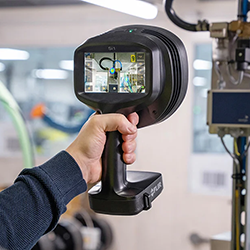3D printer builds a cube from a vat of goo … using a phone screen
Manufacturers most upbeat in two years, ISM survey shows
What are the business and security impacts of Industry 4.0?
Japan's Rust Belt Counting on Robonomics to Run Assembly Lines
A New Use for High-Speed Fiber Optics: Connecting Smart Factories
Seven Career Paths Opening With the Industrial IoT
IIoT's new business models
Robots won't kill the workforce. They'll save the global economy.
Delta buys Unicom to advance smart factories
How Industry 4.0 is changing human-technology interaction
Siemens to buy Mentor Graphics amid push to digitize factories
Trump promises to bring back manufacturing jobs, but robots won't let him
6 machine learning misunderstandings
Time for Monumental Thinking in Additive
With 3D printers and nanofingers, HP Labs builds a new future
Records 766 to 780 of 863
First | Previous | Next | Last
Engineering - Featured Product

